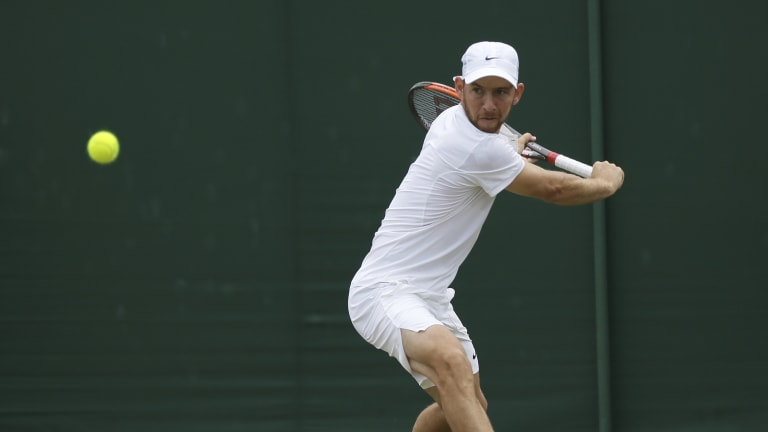LONDON—When Dudi Sela completed his five-set, second-round victory on a sultry Thursday afternoon at the All England Club, he raised both of his arms up high and tossed his racquet skyward. On the Y-axis, Sela’s defeated opponent, John Isner, probably still stood taller than either the clenched fists or the airborne frame.
The gap in size between Sela, 5’9”, and Isner, 6’10”, is only the most obvious difference among these tour veterans. Isner’s primary weapon is his giant serve—both his first and second deliveries have tormented his playing colleagues since he arrived on the scene 10 years ago. Sela’s primary weapon is his one-hander, and any discussion of tennis’ greatest backhands must include his signature shot. If Isner inflicts damage with power, Sela does so with placement, but by no means is this backhand lacking for speed. Opponents need to guess when attempting to return both Isner’s searing serve and Sela’s backhand, for the diminutive dynamo can change direction with his versatile stroke an in instant.
The differences go on, down the direction each man wore their white caps. But in truth, there may be no two professional tennis players with more similarity than Isner and Sela—because few professional tennis players get as much out of their games as they do.

